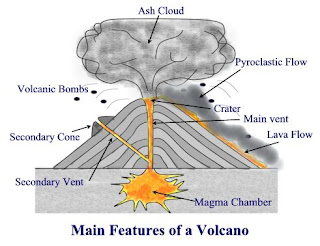
Mount St. Helens shortly after the eruption of May 18, 1980
Dormant volcanoes are those that are not currently active (as defined above), but could become restless or erupt again. Confusion however, can arise because many volcanoes which scientists consider to be active are referred to as dormant by laypersons or in the media.
Extinct volcanoes are those that scientists consider unlikely to erupt again. Whether a volcano is truly extinct is often difficult to determine. Since "supervolcano" calderas can have eruptive lifespans sometimes measured in millions of years, a caldera that has not produced an eruption in tens of thousands of years is likely to be considered dormant instead of extinct.
For example, the Yellowstone Caldera in Yellowstone National Park is at least 2 million years old and hasn't erupted violently for approximately 640,000 years, although there has been some minor activity relatively recently, with hydrothermal eruptions less than 10,000 years ago and lava flows about 70,000 years ago. For this reason, scientists do not consider the Yellowstone Caldera extinct. In fact, because the caldera has frequent earthquakes, a very active geothermal system (i.e., the entirety of the geothermal activity found in Yellowstone National Park), and rapid rates of ground uplift, many scientists consider it to be an active volcano.







